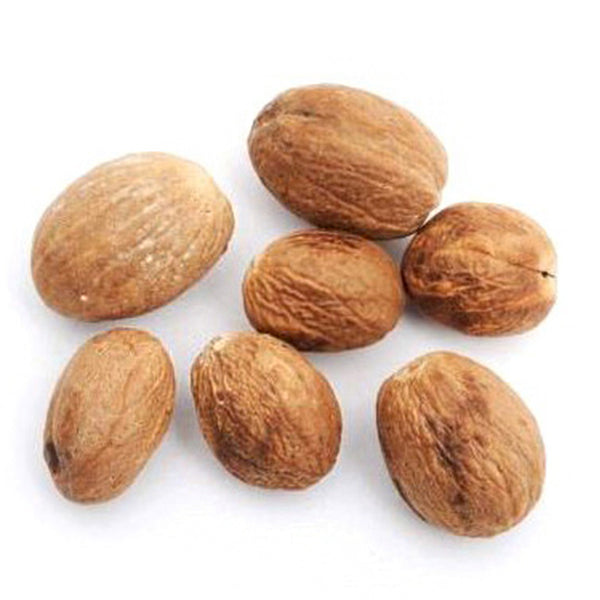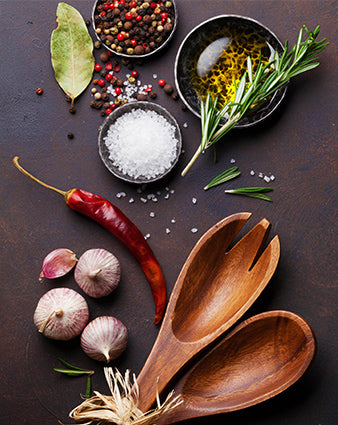Our organic range is certified by the Soil Association.
Product
Info
DESCRIPTION
Product: Organic Whole Nutmegs
Latin Name: Myristica fragrans syn. Myristica officinalis.
Plant Family: Myristicaceae
Other Names: Qoust, Sadihika, Wohpala, Nuez Moscada, Muscade, Muskatnuss, Muskotnöt, Noce Moscata, Jaiphal, Buah Pala, Rou Dou Kou, Natumegu and Szerecsendió.
Description: Aromatic, sweet, rich, spicy… It’s safe to say that Whole Nutmeg ticks all the boxes when it comes to flavour, but did you know this seed-like spice is also certified Organic?!
SUGGESTED USE
Baking, cooking, grilling, crafting and even creating cosmetics, it doesn’t matter what you do, nutmeg is always a welcomed aromatic flavour. An ideal partner for dairy dishes (especially rice puddings and cheese sauces... Oh and don’t forget risotto!) Grate and stir into homemade sausages and burgers, sprinkle onto veg and enhance the flavour of bolognese and chili. A little goes a long way!DISCLAIMER
You should always read the label before consuming or using the product and never rely solely on the information presented here.
Technical
TECHNICAL INFORMATION
TECHNICAL DOCUMENTS
Download technical documents.
Allergen Statement
JustIngredients Limited supplies a range of products that are internationally sourced from approved suppliers. Information is gathered from all suppliers to enhance knowledge of the product and supplier handling procedures.
The following products which are or contain allergens may be handled by approved suppliers on behalf of JustIngredients Limited; Cereals containing gluten (wheat, rye, barley, oats, spelt, kamut and their hybrid strains), Peanuts, Soybeans, Nuts, Celery, Mustard, Milk and dairy products, Sesame seeds, Products containing sulphur dioxide and sulphites at concentrations of more than 10mg/kg or 10mg/litre expressed as sulphur dioxide.
Handling procedures are in place to reduce the likelihood of allergens being present, however no guarantees are given that our ingredients are totally free of traces in the products supplied. If in doubt, please email technical@justingredients.co.uk.
Disclaimer
You should always read the label before consuming or using the product and never rely solely on the information presented here.
Delivery
DELIVERY INFORMATION
We offer a number of different delivery services, allowing you to take control and choose how quickly you'd like your order delivered; the exact delivery options available for your desired destination, will be displayed to you in the checkout.
WHEN WILL MY ORDER BE DISPATCHED?
Orders placed before 2pm (Monday to Friday) will be dispatched the same day; orders placed after 2pm (or on the weekend) will be dispatched the following working day.
MY BUSINESS HAS SPECIFIC DELIVERY REQUIREMENTS
Please contact our sales department before placing your order, via email on sales@justingredients.co.uk or call our team on +44(0)1291 635525.









